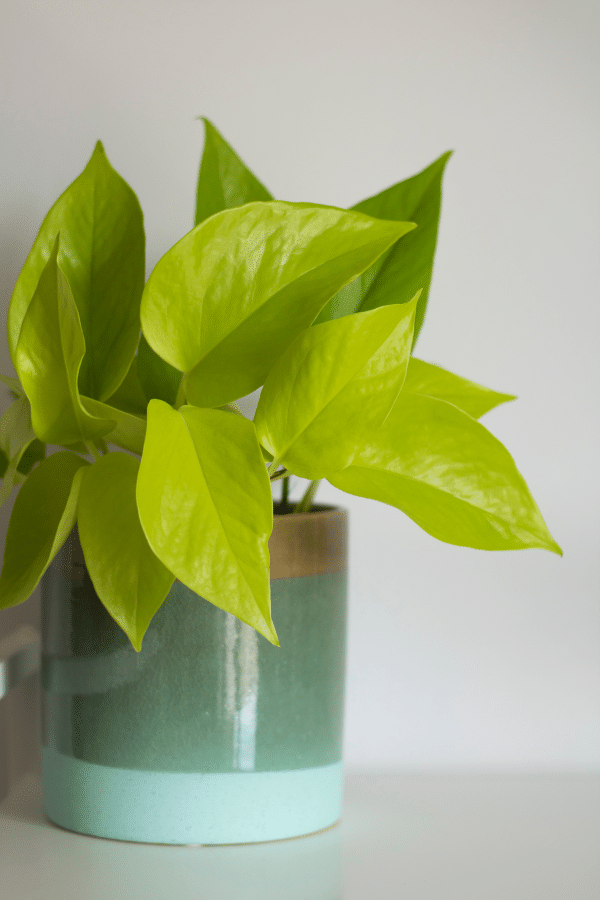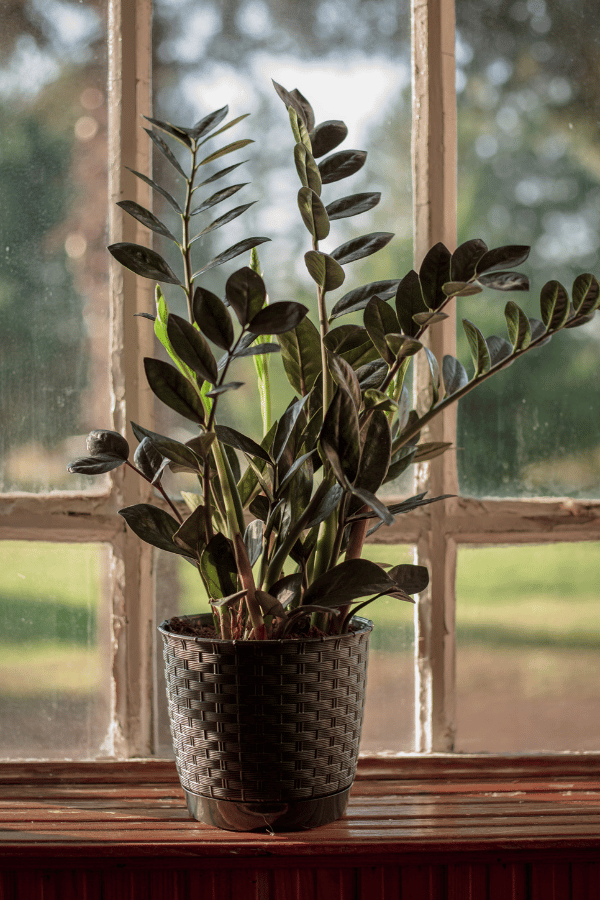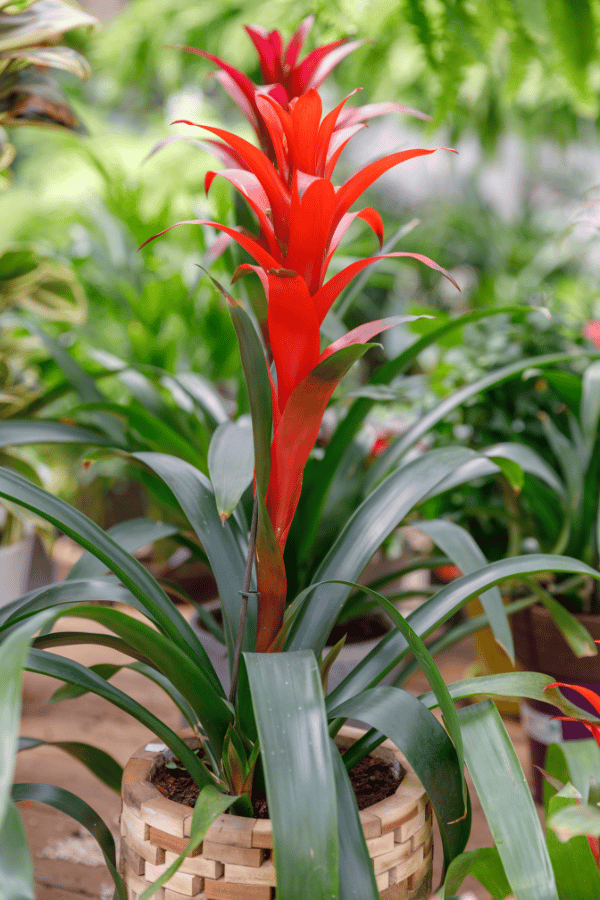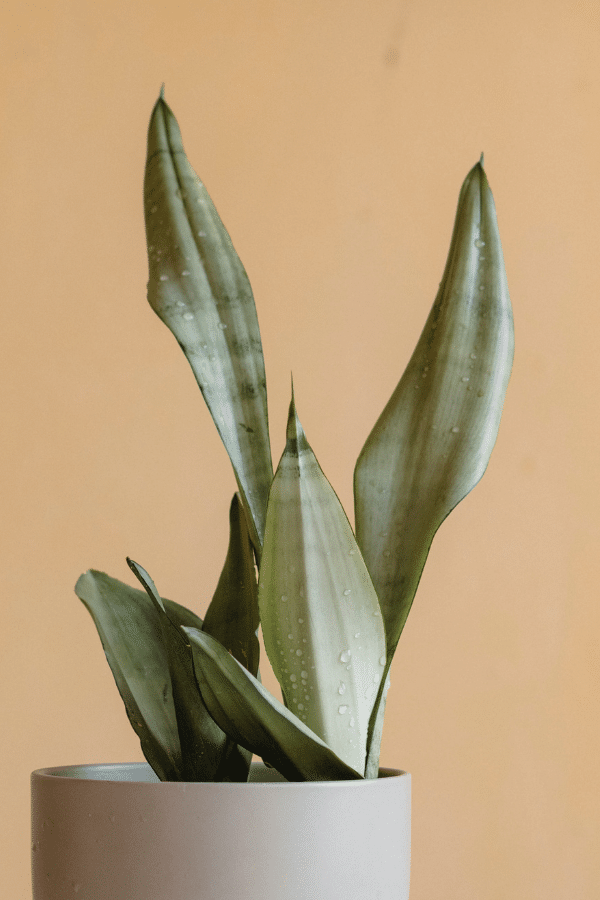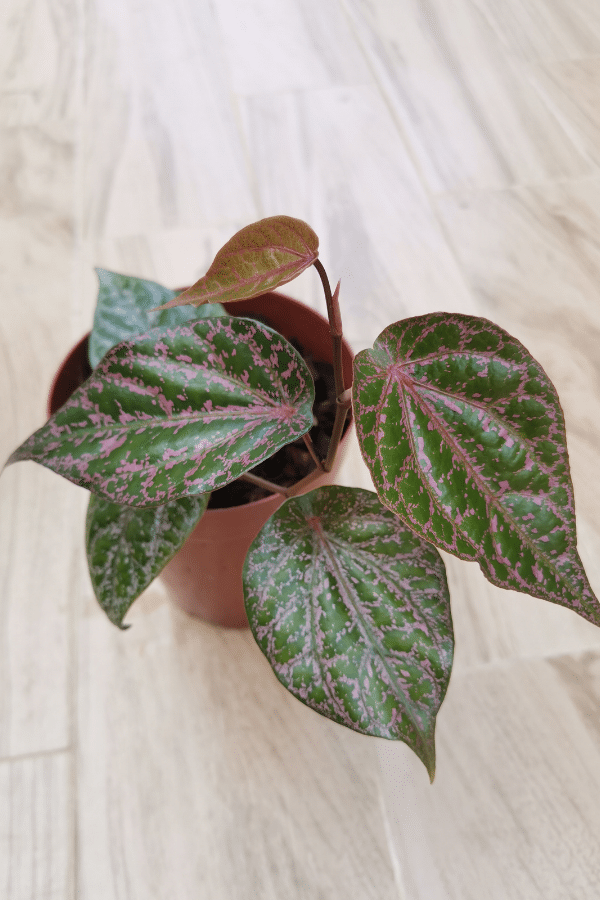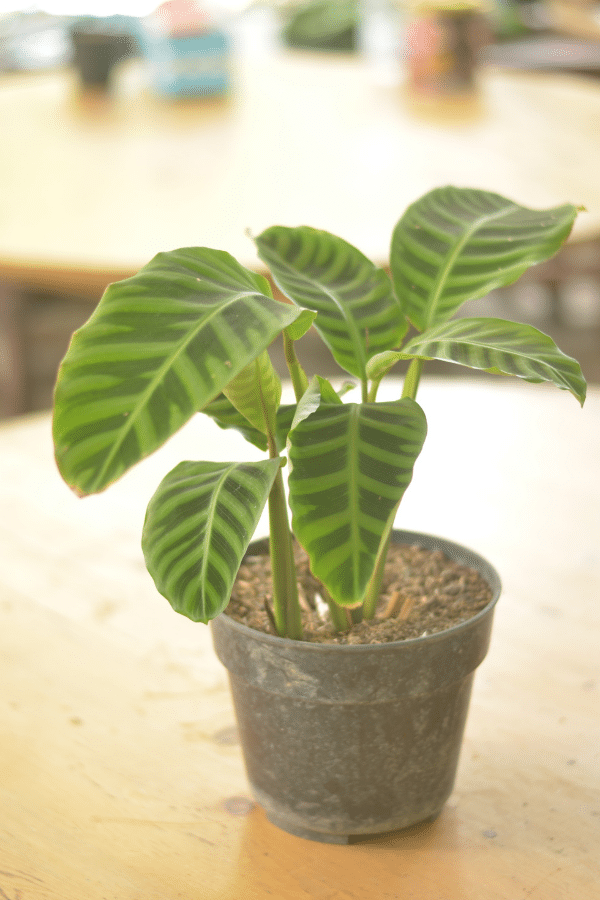Dracaena Janet Craig
Scientific Name: Dracaena Fragrans, Dracaena Deremensis
Common Name: Dracaena Janet Craig
Dracaena Janet Craig care is easy as long as you help to create an atmosphere like its natural environment inside your home to make this plant grow well and healthy. Coming from the tropical areas of Africa, the Janet Craig plant needs consistently moist soil, bright light, hot temperatures, and a humid environment.
Quick Care Overview
| Common Name | Dracaena Janet Craig |
| Scientific Name | Dracaena Fragrans, Dracaena Deremensis |
| Family | Asparagaceae |
| Origin | Africa |
| Growth Rate | Slow to Medium |
| Identification | Upright large vertical shiny dark green leaves coming from a thick stem |
| Height | 5 – 15 feet tall |
| Soil | Loose, well-aerated soil |
| Water | Do not allow to completely dry, consistently moist soil |
| Temperature | 60-85F |
| Sunlight | Bright indirect sunlight |
| Toxic to Cats & Dogs | Yes |
| Toxic to Humans | Yes |
| Pests | Mealybugs, scale, spider mites |
| Diseases | Root rot |
Below we will dive deep into how to care for Dracaena Janet Craig.
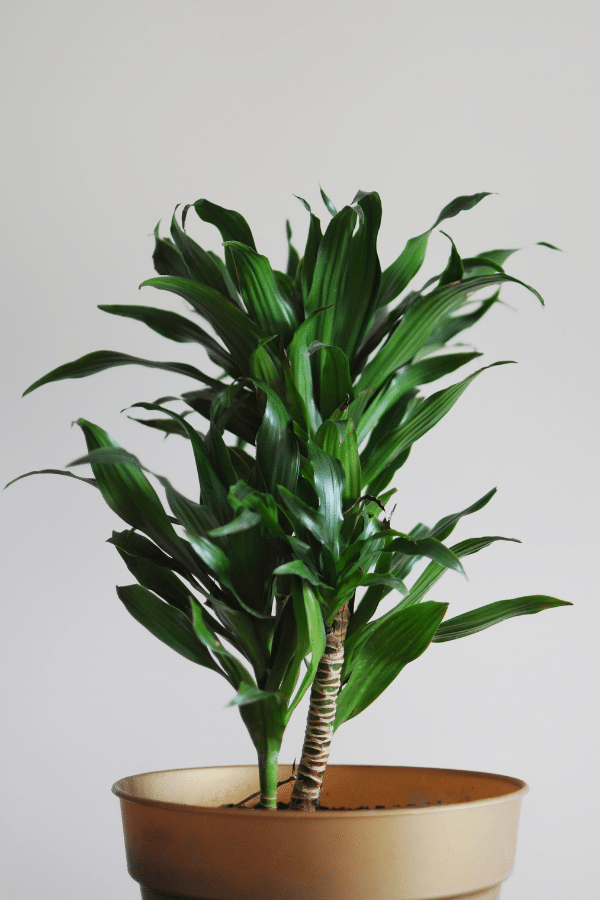
Dracaena Janet Craig History
With its name deriving from the Greek word ‘drákaina,’ meaning “female dragon”, the beautiful, Dracaena Deremensis leaves an impression of mightiness. Known by the common name, ‘Janet Craig’, this indoor tropical plant native to Africa is quite an attention grabber.
Dracaena Janet Craig Identification
Presenting with lush upright foliage, this houseplant resembles a corn plant although larger and wider. Upright, large vertical leaves are a shiny, emerald green. Mature plants will grow cane-like stems with clusters of leaves growing from the top with a long stem.
Dracaena Janet Craig Growth Facts
Being a moderate grower that will tolerate low light conditions, this plant will flourish in bright light, speeding up its growth drastically.
How Big Does a Dracaena Janet Craig Get?
The Janet Craig plant may grow up to 15 feet tall in its natural environment, but when grown as a houseplant will likely reach a height of around 5 feet tall. Consider using this plant as a floor plant.
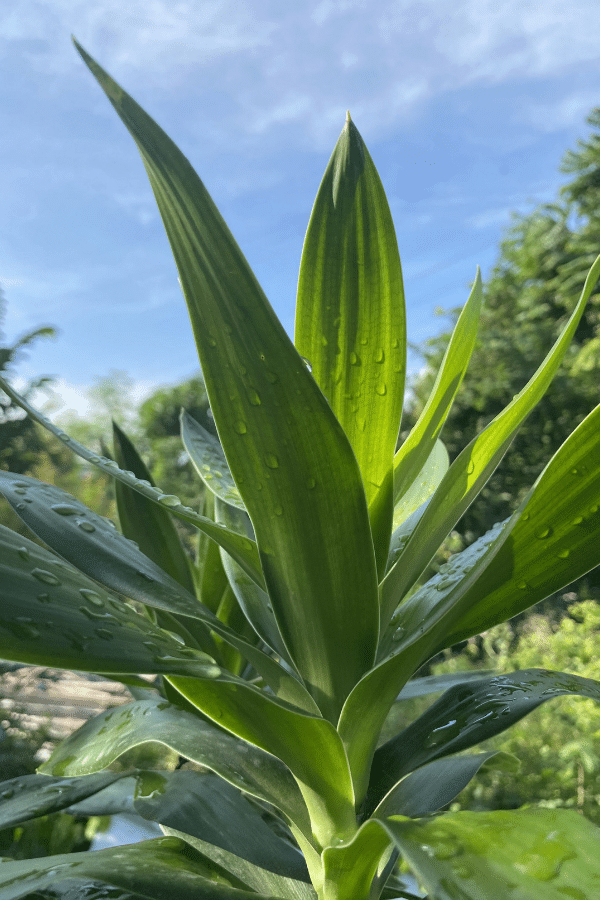
Dracaena Janet Craig Care
While suitable to be grown indoors or outdoors, this Dracaena is easy to grow indoors inside a container with a little care.
Dracaena Janet Craig Soil
Dracaena Janet Craig prefers to have very loose, well-aerated soil. A standard potting mix that has incorporations of organic materials such as peat moss, perlite, or vermiculite should do nicely. Alternatively, an orchid potting mix will provide the airy texture this plant craves.
Dracaena Janet Craig Fertilizer
Janet Craig Dracaena will enjoy fertilization during the growing season to keep its foliage lush and assist in growth. A general liquid fertilizer indicated for houseplants should be applied monthly during spring and summer, but only use half of the recommended dosage. Do not overfertilize. Salt buildups from overfertilization may cause significant damage to the plant. Do not feed in fall and winter during dormancy.
Dracaena Janet Craig Watering
This Dracaena requires a moderate amount of water and likes consistently moist soil that is not oversaturated. Do not allow the soil to completely dry. Rewater after the first inch of topsoil has become dry and ensure that your plant is not sitting in standing water in the plants’ tray as this may cause many issues, including leaves turning yellow.
Dracaena Janet Craig Light Requirements
This tropical plant enjoys bright, indirect light. It is important to note that too much direct sunlight will cause foliage burn. Insufficient light will cause yellow leaves and stress the plant out. However, this Dracaena will tolerate filtered light, but lower levels of light will slow down growth. If the plant begins wilting or growth halts, it is likely indicative that your Dracaena requires more sunlight. Alternatively, you may supplement your plant with artificial light such as a grow lamp.
Dracaena Janet Craig Temperature & Humidity
Dracaena Janet Craig enjoys hot and humid temperatures, being a tropical plant, and will grow best when kept at temperatures between 60 to 85F. This plant will tolerate average home humidity; however, higher humidity levels that emulate its natural environment will aid in growth. You may add a humidifier, mist the plant, or invest in a pebble tray to increase humidity levels.
Repotting Dracaena Janet Craig
For best Dracaena Janet Craig care, repotting should be done every 2-3 years, or whenever you see roots poking through the drainage holes of the pot. Repotting should always be done in the spring. Repotting is also a wonderful time to propagate Janet Craig.
Dracaena Janet Craig Maintenance & Pruning
The Janet Craig plant does not require much in the way of maintenance or pruning. You may prune back leaves periodically if they have become too tall or discolored. Mature canes may be pruned down with sterilized shears. A new cluster of leaves will sprout from where it was cut. Janet Craigs are often dust-magnets and removal of the dust will aid in sunlight absorption. Monthly, wipe down the leaves of your Dracaena to get rid of the dust.
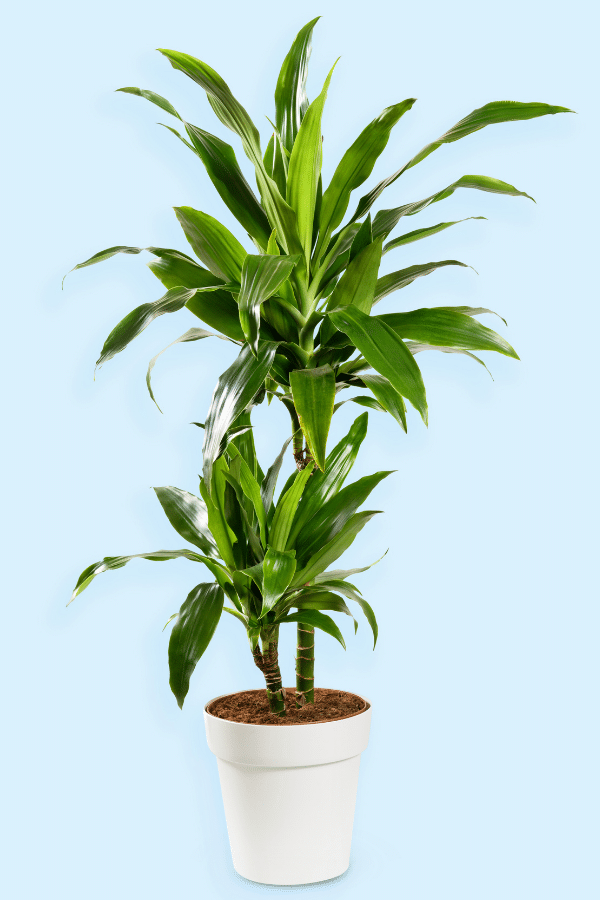
Dracaena Janet Craig Propagation
Dracaena Janet Craig may be propagated by stem cuttings. To take a stem cutting, simply cut a piece of stem that includes a few leaves using sterilized scissors that is several inches long. Trim any lower leaves on the stem to allow the stem to root. Allow the cut stem(s) to callus overnight before planting in potting soil or placing in a jar of water. Then, water the plant and keep the propagation in indirect light.
Dracaena Janet Craig Toxicity
Dracaena Janet Craig plant contains saponins, which are naturally occurring chemicals that protect plants from disease and bugs. They are toxic when consumed by humans and pets but usually not fatal. Janet Craig plant should never be consumed in any way.
Toxicity to Humans
Due to the high saponin content, this plant should not be consumed by humans. Ingestion may lead to GI upset and other adverse reactions.
Toxicity to Cats & Dogs
This plant is considered toxic to pets due to its saponin content. Ingestion may cause drooling, vomiting, and loss of appetite. Do not allow your pets to ingest any part of this plant.
Dracaena Janet Craig Problems
Dracaena Janet Craig Leaves Turning Yellow
Leaves turning yellow is a common sign of overwatering or excess fertilization. Leaves may turn yellow and drop due to excess watering or underwatering. Ensure that you water thoroughly and allow the top inch or so of soil to dry before rewatering. Yellow leaf tips can also be indicative of too much fluoride and chlorine in the plant. Instead of using tap water, use distilled or filtered water.
Dracaena Janet Craig Leaves Turning Brown
The foliage of Dracaena Janet Craig may have brown tips when underwatered. Alternatively, browning of the leaves may occur from excess salts from tap water or fertilization. It is wise to flush salts from the growing medium annually.
Dracaena Janet Craig Diseases
While mostly disease resistant, this Dracaena may suffer from bacterial or fungal infection when overwatered. Ensure that your plant has proper drainage and is not sitting in excess drainage water in the plant tray.
Dracaena Janet Craig Pests
Because of the saponins naturally occurring in this plant, Janet Craig is mostly insect resistant, but this plant can struggle with infestations from insects such as scale, mealybugs, and spider mites. These bugs like to hang out around the undersides of leaves and on the stem. Remove the plant from other nearby plants and treat it with a houseplant pesticide, like neem oil or insecticidal soap once you identify the infestation.
FAQ
How Much Light Does a Janet Craig Plant Need?
Dracaena Janet Craig likes bright indirect light for optimal growth.
How Often Should I Water My Dracaena Janet Craig?
Depending on how big or small the Janet Craig is, depends on how much water to give it. A general rule of thumb is watering this plant every seven to ten days.
How Big Does a Janet Craig Get?
Janet Craig can get as big as 15 feet tall in its natural environment. As a houseplant, it can grow as tall as five feet tall.
When Should I Repot My Janet Craig?
Repot Dracaena Janet Craig every two to three years or when you can notice the plant is becoming root bound.

